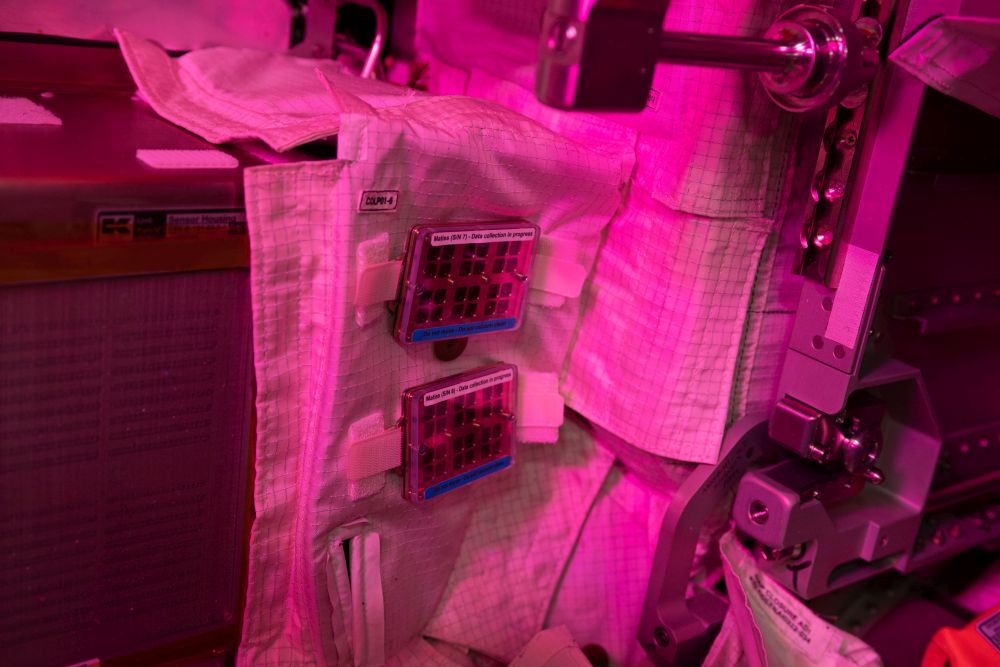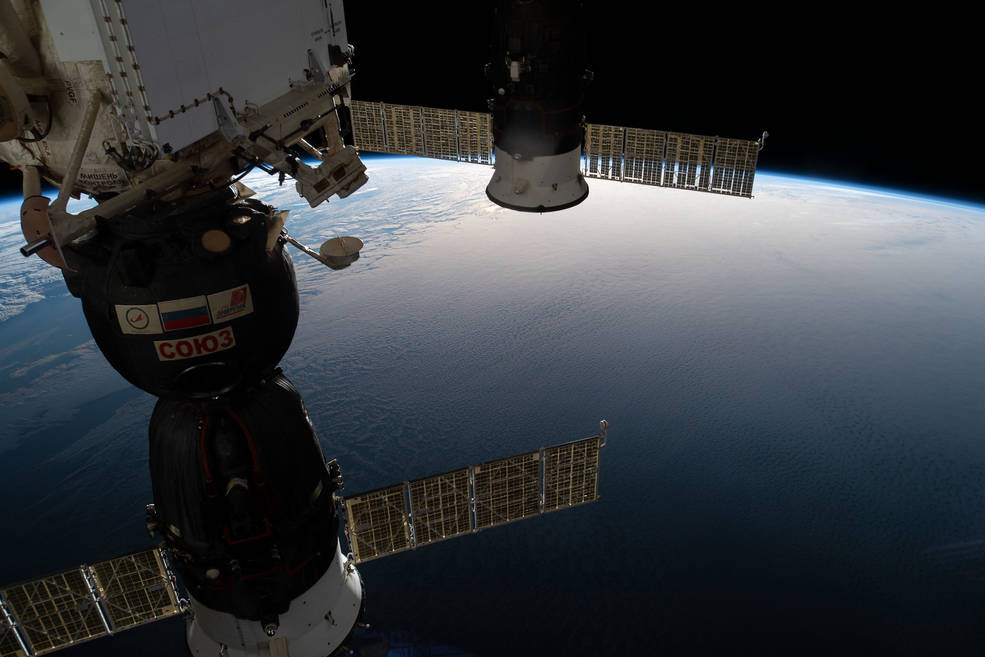The International Space Station's usual complement of six astronauts grew by 50% recently, making things a little crowded up there. The nine astronauts come from four separate space agencies, and for the first time, an astronaut from the United Arab Emirates (UAE) is onboard the ISS.
The ISS is a multicultural place. Astronauts from around the world serve on the station to advance the scientific goals of humanity and to build cooperative ties between Earth's different peoples. It's kind of like Star Trek, but in space.
On Friday, three new crew members arrived on the ISS: NASA's Jessica Meir, Russia's Oleg Skripochka, and Hazza Al Mansouri from the UAE. Right now there are astronauts from four different countries on board, and in the ISS's history, 239 astronauts from 19 different countries have worked on the station.
The 'Space Band' that Parmitano is talking about is part of the crew's effort to deal with the reality of life onboard the cramped ISS. It's a stressful environment, with disturbed day/night cycles, isolation from loved ones back on Earth, and strange noises. The background noise in the Columbus Module, which is a science laboratory, can reach 55 decibels. As ESA astronauts explain in this podcast, that's not enough to cause any hearing damage, but it can be very grating on the nerves.
'The Cry of the Seagull' is one of the things the crew is doing to try and manage their time on the ISS together. There's no hint yet of what that music will sound like, but according to a press release, the first album is due out "in the coming light year."
There's a lot going on onboard the ISS. When Parmitano takes over command, that will mark the beginning of Expedition 61. There's several science experiments, as well as some important maintenance.
An ongoing scientific theme on the ISS is the issue of bone-density loss. Astronauts suffer about 1% bone density loss while in space, which is about the same as what osteoporosis sufferers lose. Muscle loss is also an issue. There's continuous research into these issues, and during Mission 61 the astronauts are contributing to a study into using specific, high-protein diets to stave off both muscle and bone loss. Scientists hope that this research will also help early detection and understanding of osteoporosis.
Other science includes the Grip Experiment, which tries to understand how micro-gravity affects people when they grip and manipulate objects. There's also the Time Experiment, which tries to understand how astronauts' perception of time changes in space, and the Matiss-2 Experiment, which collects bacteria samples and analyzes how they interact with anti-bacterial materials and cleaning products.
Then there's the part where the astronauts have to clean everything. Saturday is cleaning day, when everyone pitches in to clean the station, including gathering waste, which can only be returned to Earth via spaceship every few months. There's not much glory in that, but it's vital.
There's a lot of specialized equipment on the ISS that has to be clean and sterile to provide valid scientific results. The Biolab deals with micro-organisms, cells, tissue cultures, plants and small invertebrates. Cleanliness is vital for Biolab.
Three of the nine astronauts on the ISS are returning to Earth on a Soyuz MS-12 spacecraft on October 3rd. Nick Hague, Alexei Ovchinin, and Hazzaa Ali Almansoori (after a brief 8-day mission to the ISS) will land on Earth at 7:00 AM in Kazakhstan. Their return marks the end of Expedition 60.
Tune in to NASA TV to watch the return.
More:
- Press Release: A FLOCK OF ASTRONAUTS
- Press Release: Full House For Space Science
- NASA: Expedition 61
 Universe Today
Universe Today


